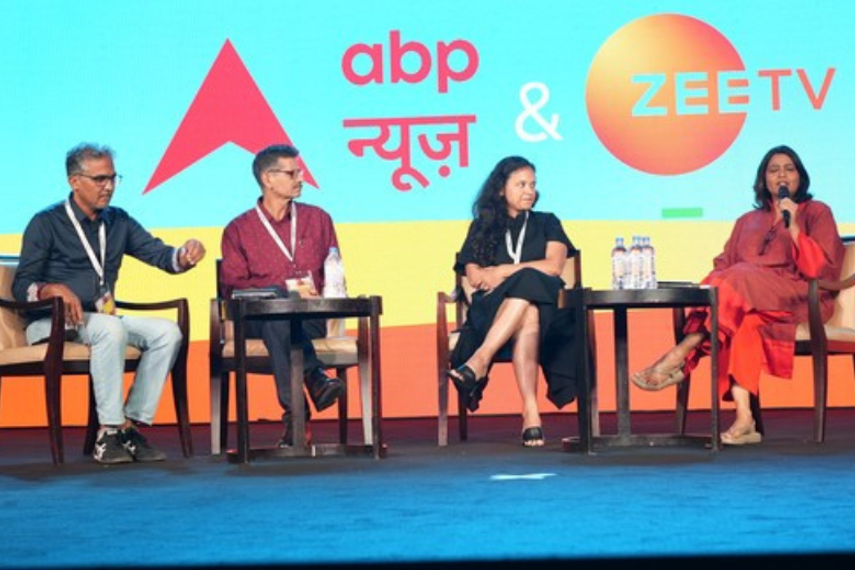On day one of Goafest 2023, Hemant Malik, divisional chief executive - ITC Foods Business; Rohit Kapoor, chief executive officer, Swiggy and Prabha Narasimhan, MD and CEO, Colgate-Palmolive India, discussed ‘brand love suffering at the altar of short term sale’. The panel was moderated by independent Journalist Anuradha SenGupta.
SenGupta started the conversation by raising a question - ‘has brand love been sacrificed in the game of evolution that marketing has gone through?’
Disagreeing with this, Narasimhan said, “I don’t think that brand love has been sacrificed. There’s an opportunity for brands to do more. I focus on both, the short-term as well as the long-term goals.”
Adding to this, Kapoor listed out qualities that brands are expected to have for creating a long-term impact. “You have to show up. You have to have an idea and also know how to execute it. How would it look if I had no good idea but only this mental image of Madmen and just watched it over and over again,” he asked.
Malik added, “A lot of things have changed in the world, but what hasn’t changed is the fact that we still have to work quarter on quarter. The definition of love from the relationship perspective today is that it's no longer about a long-term relationship, but a 'situationship'. So, instead of calling it brand love, I’d call it a brand situation. A lot of us who create challenger brands need to find mechanisms for people to be able to experience us.”
Brand advantage
The panellists believed that big and small brands have distinct advantages - the former has reach, since they’re available in many stores, whereas the latter has the advantage of media since it is very concentrated.
Getting down to reality, Narasimhan also pointed out that none of these advantages exists today. She said, “You could have the reach, you could have the medium. In the end, it’s actually about how you can create a degree of affinity. That hasn’t changed much. It still goes back to if my product delivers on its promise.”
Evaluating performance marketing
Getting down to basics, SenGupta asked the panellists what they do with all the data that they collect around how people react to performance-oriented targeted cues.
Malik shared that marketers could always get away by saying that they were building brand equity and that the sales would follow over time.
Explaining what data means to a marketer today, he said, “It's a great time for marketers because today you can not only measure every input, but also respond, react, and change what’s needed. Data is not AI, it’s an interpretation and people can interpret the same data differently. We are all enabled because we can make decisions with utmost clarity. However, while data helps you, it also makes you vulnerable.”
The marriage between creative and marketing
Getting to the heart of the matter, Kapoor shared that CEOs have become too distant from the creatives. Getting applause for the comment, he further spoke about the relationship between teams and departments at the brand’s end. “There are too many departments today and the synergy needs to be corrected. Also, If I’m not offended by something the creative guys are creating, then something is wrong. You have to be open to it.”
However, he added that the notion of creativity being the one act that wins, has to die. “Today, there are 19-year-old influencers and meme creators. Almost everyone possesses creativity and has a licence to create. For your creative expression to reach somewhere, you have to buy stuff on media. Now, 17-year-olds can directly go to the consumer and show them what creativity is.”
Kapoor gave a little sneak peek into how roles in the marketing profession have expanded. He said, “When I started as a brand manager, it was just me. Now we have a marketing insights person, a marketing services person and so on. We are also segmenting continually and so the challenge is to make sure that all of us are working for the same brand. Everyone has a different expertise and we should all be able to work together.”
In the end
Brand love is perhaps the most difficult human migration, according to Narasimhan. Speaking about the same, she explained, “I remember waking up every morning and evaluating every single choice that I make. If I go to a grocery store, I need to work on my instinct. So, if that brand in that particular category is not imprinted in my head, I'm not going to get a basket and buy from that store.”
SenGupta then ended the session by asking the panellists about their expectations from agencies - to which each felt the need to learn and be challenged by agencies.

